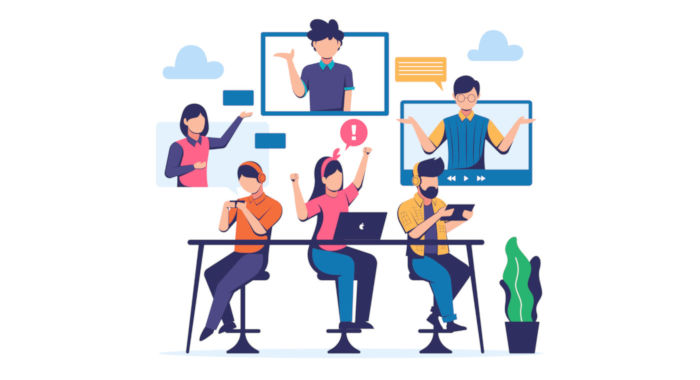Table of Contents
ToggleChoose the Right Web Meeting Type
Selecting the appropriate type of web meeting is crucial, depending on the specific goals and participant profile. For internal team updates, a standard video call may suffice, while for client presentations, a webinar format with interactive elements like Q&A sessions might be more suitable.
Analyze the Audience
Understanding who will attend the meeting is key to choosing the right tools and features. For instance, if the audience is tech-savvy, utilizing advanced collaboration tools like real-time document editing can enhance engagement.
Define the Meeting Objectives
Clear objectives drive the format choice. If the goal is decision-making, structured meetings with predefined polls or decision points help streamline the process and lead to quicker resolutions.
Consider Technology and Tools
Choose a platform that supports the required interaction level. For example, Zoom offers breakout rooms which are ideal for workshops, while Microsoft Teams integrates well with Office 365 for collaborative meetings.
Practical Application Example: Sales Pitch
In a sales pitch scenario, incorporating real-time product demonstrations via screen sharing and utilizing engagement metrics to gauge client interest can be particularly effective. Data shows that interactive presentations increase client engagement by up to 30%.
Adapt to Feedback and Adjust
Regularly soliciting feedback from participants helps refine meeting formats. A tech company reported a 25% increase in meeting efficiency after adapting their formats based on attendee feedback, illustrating the importance of flexibility in meeting planning.
Determine Required Equipment
Ensuring all participants have the necessary equipment is foundational to a successful web meeting. This involves more than just having a working computer; it requires a strategic assessment of all hardware and software needs tailored to the type of meeting being conducted.

Assess Hardware Needs
Identify what hardware is essential for your meeting type. For high-stakes negotiations or large-scale presentations, high-quality webcams and microphones can make a significant difference in communication clarity and professionalism.
Software and Connectivity
Choosing reliable software that supports your meeting’s needs is just as important as hardware. For instance, platforms like WebEx or GoToMeeting provide robust stability and wide-ranging compatibility with various operating systems which are crucial for large audiences.
Practical Application Example: Remote Team Collaboration
Consider a remote team planning session where team members are spread across different continents. Ensuring that each member has access to high-speed internet and dual monitors can facilitate more effective engagement and multitasking during the meeting. A survey among remote teams revealed that dual monitor setups increased productivity by up to 20%.
Evaluate Audio Solutions
Good audio is critical; options include headsets, dedicated microphones, or integrated speakerphones. For example, using noise-cancelling microphones can reduce background noise, which is essential in busy or shared working environments.
Continuous Technology Updates
Keep technology up to date to avoid glitches that could disrupt the meeting flow. Regular updates and checks can prevent last-minute issues that delay or derail important discussions. A tech firm found that updating their video conferencing software regularly decreased technical issues by 40% during critical meetings.
Consider Display Platforms
Selecting the right display platforms can greatly enhance the effectiveness of a web meeting by ensuring all participants have a clear and consistent viewing experience. This step is crucial, especially when sharing visual content like presentations, videos, or real-time data analytics.
Optimize for Various Devices
Ensure compatibility across different devices—laptops, tablets, and smartphones. This ensures that no participant misses out on crucial visual information due to device limitations. For instance, a platform that offers responsive design can automatically adjust content to fit the screen size and orientation of any device, which can increase the accessibility and effectiveness of the presented material.
High-Resolution Displays
Using high-resolution displays for detailed visual presentations helps in maintaining clarity and engagement. For example, when presenting complex graphs or detailed designs, a resolution of at least 1080p is recommended to ensure that all participants can see the nuances without straining.
Practical Application Example: Training Workshop
In a virtual training session involving detailed software tutorials, utilizing a platform that supports high-definition screen sharing is crucial. This allows participants to clearly see the steps being demonstrated. Statistics indicate that clear, high-resolution displays can improve learning outcomes by up to 25% in virtual training environments.
Adapt Visual Content
Adapting visual content to suit different platforms and bandwidth conditions is key. For example, compressing video files for smoother streaming over lower bandwidths can help maintain engagement even when internet speeds are inconsistent.
Continuous Quality Assurance
Regular testing of display settings and configurations before the meeting ensures that all participants will have a similar viewing experience. This practice helps in identifying any discrepancies in how content is displayed across different platforms, allowing time for adjustments. A corporate survey showed that companies that conducted pre-meeting display tests reduced technical issues by 30% during meetings.
Make Necessary Preparations
Proper preparation is the backbone of a successful web meeting, ensuring that all logistical, technical, and content-related elements are aligned to meet the meeting’s objectives effectively.
Develop a Clear Agenda
Create and distribute a detailed agenda ahead of the meeting. This should include topics to be covered, the timeline, participant roles, and any preparation required from the attendees. A well-structured agenda can increase meeting efficiency by keeping discussions focused and on track.
Technical Setup and Test
Conduct a comprehensive technical check to ensure all systems and software are fully functional. This includes testing the internet connection, audio, and video setup. Performing a dry run with all participants before the actual meeting can prevent delays caused by technical issues.
Practical Application Example: Client Consultation
In a scenario where a financial consultant is presenting investment plans to a client, having a backup system for document sharing and communication can be crucial if the primary system fails. Data indicates that having a technical backup plan can reduce meeting delays by up to 50%.
Coordinate with Participants
Confirm participant availability and provide them with all necessary information, including login details, agenda, and preparatory material. Ensuring that all participants are well-prepared can lead to more productive discussions and effective decision-making.
Prepare Engagement Tools
For interactive sessions, prepare tools like polls, shared documents, or breakout rooms in advance. This preparation allows for smooth transitions during the meeting and keeps engagement levels high. For example, an interactive Q&A session using real-time polling software can increase participant interaction by up to 40%.
Host and Manage Online Meetings
Effective management of online meetings requires a proactive approach to hosting, where communication, engagement, and technical handling are meticulously planned and executed.
Start on Time and Manage the Flow
Begin the meeting at the scheduled time to set a professional tone and respect participants’ time. Use the agenda as a roadmap to guide the discussion and keep the meeting on track. Keeping introductions brief and focused can prevent early disengagement.
Utilize Engagement Techniques
Employ interactive techniques such as real-time polling or question breaks to maintain participant interest and interaction. Dynamic engagement has shown to increase participant satisfaction by over 35% in online meetings.
Practical Application Example: Team Brainstorming Session
In a creative brainstorming session, using virtual whiteboards and breakout rooms can facilitate idea generation and team collaboration. An industry report suggests that such interactive tools can enhance creative output by up to 50% during virtual meetings.
Handle Technical Issues Swiftly
Be prepared to address common technical issues quickly. Having a technical support person on call can minimize disruptions. Immediate troubleshooting can reduce downtime and maintain the meeting’s momentum.
Facilitate Clear Communication
Ensure that everyone has a chance to contribute, using features like ‘raise hand’ and managing speaking turns. This not only keeps the meeting orderly but also ensures all voices are heard. Clear and inclusive communication can improve decision-making effectiveness by 40%.
Monitor and Adapt
Continuously monitor the meeting’s energy and dynamics, ready to adapt the approach if certain sections are dragging or participants seem disengaged. For example, switching from a presentation to an interactive Q&A session can re-engage participants and drive home key points effectively.
Make the Most of Follow-Up Processes
Effective follow-up after a web meeting is crucial for capitalizing on the decisions made and maintaining momentum. This step ensures that all participants are aligned on action items and deadlines, which significantly increases the overall productivity and outcomes of the meetings.

Distribute Meeting Minutes Promptly
Send out the meeting minutes within 24 hours to keep the information fresh and ensure all participants are clear on their next steps. These minutes should include a summary of decisions made, action items assigned, and any deadlines agreed upon.
Set Actionable Tasks
Assign clear, actionable tasks with specific deadlines to individuals or teams. This not only clarifies responsibilities but also helps in tracking progress and accountability. Data shows that clear task assignment post-meeting can enhance project completion rates by up to 30%.
Practical Application Example: Project Review Meeting
After a project review meeting, sending out a detailed follow-up email that includes a link to a shared document with project timelines, individual responsibilities, and next steps can help keep the team on track. Teams that used collaborative project management tools reported a 40% improvement in meeting project deadlines.
Schedule Next Steps
If follow-up meetings are necessary, schedule them at the end of the current meeting while everyone is present. This ensures high attendance and prioritization among participants, directly influencing the continuity and success of project milestones.
Feedback for Improvement
Collect feedback on the meeting’s effectiveness to continually improve the process. This could be done through a simple online survey sent out with the minutes. Feedback mechanisms have been shown to improve the quality and efficiency of meetings by allowing hosts to adapt and cater to participants’ preferences and needs.
Leverage Technology for Reminders
Use project management tools or calendar invites to send automatic reminders for action items and upcoming meetings. Implementing automated reminders can reduce delays in task completion and ensure timely preparation for subsequent gatherings.



